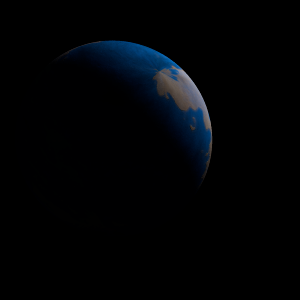|
|
Space Astro
|
Info for exoplanet "Papepe'raxlyke"
| Scientific (actual) data |
|---|
| Name | Kepler-1554 b |
| Planet status | Confirmed |
| Radius | 0.259 |
| Orbital period | 198.089 |
| Discovered | 2016 |
| Updated | 2021-02-05 |
| Tconj | 2455150 |
| Publication | Announced on a website |
| Detection type | Primary Transit |
| Alternate names | 2MASS J19061828+4144292 b, K04121.01, KIC 6349881 b, KOI-4121 b, KOI-4121.01, WISE J190618.26+414429.5 b |
| Star name | Kepler-1554 |
| Right ascension | 286.58° |
| Declination | 41.74° |
| Mag j | 14.367 |
| Mag h | 13.932 |
| Mag k | 13.814 |
| Star distance | 982 |
| Star metallicity | -0.1 |
| Star mass | 0.84 |
| Star radius | 0.81 |
| Star age | 4.68 |
| Star temperature | 5297 |
| Star alternate names | 2MASS J19061828+4144292, KIC 6349881, KOI-4121, WISE J190618.26+414429.5 |
| Wikipedia article | Kepler-1554 b |
Back
| |
| Fictional info (?) |
|---|
| Suggested name | Papepe'raxlyke |
| Planet type | Cold planet |
| When viewed from Earth, this proximity to Kepler-1554 means the planet can only be seen near the western or eastern horizon during the early evening or early morning.
It may have had neon oceans in the past, but these would have vaporized as the temperature rose due to a runaway greenhouse effect.
Its north and south poles, therefore, lie where most other planets have their equators. |
| Atmosphere | Ammonia | 95% |
| Formaldehyde | 3.9% |
| Neon | 0.61% |
| Ammonium hydrosulfide (NH4SH) | 0.095% |
| Ethane | 0.03% |
| Hydrogen | 0.0062% |
| Nitrogen | 1.1E-5% |
| Atmospheric pressure | 12 bar |
 |
| Moon | Cesile-mi | Medium-sized almost round rocky comet |
| Linmede-sut | Large irregular gaseous planetoid |
| Mede | Large irregular rocky asteroid |
| Adrax Xidi | Small round crater-filled moon |
| Trin Mir | Small round oceanic asteroid |
| Heriso | Very small almost round rocky moon |
| Euke Ar | Medium-sized almost round rocky comet |
| Ronpsa Lasdes Tur | Huge round crater-filled comet |
| Athionn | Very small almost round oceanic comet |
| Psake-lade | Very small slightly egg-shaped rocky asteroid |
| Mone'girphaë | Huge potato shaped ice comet |
| Ermabqeq | Medium-sized almost round ice moon |
| Teatar Spon | Huge round rocky moon |
| Cali Ophe | Huge irregular rocky moon |
| Google search for Papepe'raxlyke |
|
Website by Joachim Michaelis
|
|
|
|